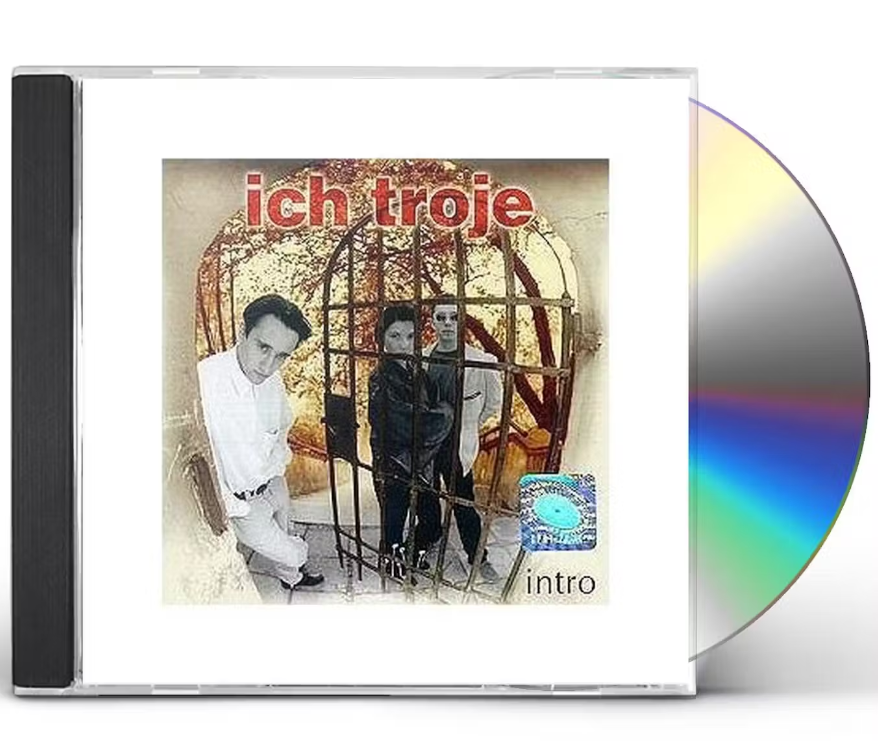Ich Troje: A Polish Pop Band
Ich Troje is a highly recognized Polish pop band that has made significant strides in the music industry since its inception in 1995. The name ‘Ich Troje’ translates to ‘The Three of Them’, an apt title considering the band’s structure, with two vocalists and one composer. The band was initially composed of Michał Wiśniewski, Jacek Łągwa, and Magda Femme, but has seen several lineup changes over the years. Despite these changes, their unique sound, characterized by a blend of pop, rock, and folk elements, has remained consistent.
One of the band’s notable achievements was representing Poland in the 2003 and 2006 Eurovision Song Contest, with the songs “Keine Grenzen – Żadnych granic” and “Follow My Heart” respectively. Although they did not claim the top spot, their participation boosted their popularity not only in Poland but also on the international stage.
Ich Troje’s music appeals to a wide range of audiences, thanks to their heartfelt lyrics that touch on universal themes of love, life, and human emotions. Their songs are also known for their catchy tunes and memorable melodies, making them a staple on Polish radio stations.
Over the years, Ich Troje has released multiple albums, each showcasing their musical versatility and growth. Their debut album, “Intro”, was a commercial success and paved the way for future projects. Other notable albums include “Ad. 4” and “7 Grzechów Głównych”, which further solidified their place in the Polish pop scene.
Ich Troje’s influence extends beyond their music. Through their distinct style and charismatic performances, they have left a lasting impact on the Polish pop culture landscape. Their vibrant and eclectic fashion choices, especially those of lead singer Michał Wiśniewski, have often made headlines. Wiśniewski’s ever-changing hair color, in particular, has become a signature trait associated with the band.
In addition to their musical endeavors, Ich Troje has also ventured into other areas of entertainment. They have appeared in various television shows and have even starred in their own reality program, “Wiśniewscy razem”, which offered fans a glimpse into their personal lives.
Despite the ups and downs, Ich Troje has remained a prominent figure in the Polish music industry for over two decades. Their resilience, coupled with their dedication to their craft, has earned them a loyal fan base. Their music continues to resonate with listeners, proving their relevance in an ever-evolving music scene.
In summation, Ich Troje is more than just a Polish pop band. They are an integral part of Poland’s musical heritage, having left an indelible mark through their captivating music and vibrant personalities. Their journey is a testament to their unwavering passion for music and their ability to connect with audiences on a profound level. Despite the changes in their lineup and the challenges they have faced, Ich Troje continues to shine, demonstrating the power of music to transcend boundaries and bring people together.

Overview of the Band
The band in discussion is an exceptional ensemble of talented musicians, each bringing a unique flair and style to their collective performance. Formed in the vibrant heart of a pulsating city, the band’s journey is a testament to their passion for music and incredible ability to create an immersive sonic experience. The band comprises a diverse group of individuals, each hailing from disparate musical backgrounds, yet united by their shared love for melody and rhythm.
Their lead vocalist possesses an extraordinary range, effortlessly hitting high notes and delivering emotionally charged performances. The guitarist, with his electrifying riffs, adds an exciting dimension to the band’s sound. The drummer, the backbone of the ensemble, delivers powerful, rhythmic beats that drive the tempo and mood of the performance. The bassist, often the unsung hero, provides the crucial link between melody and rhythm, filling out the harmonic framework with their deep, resonant tones.
They have a diverse repertoire, with influences ranging from classic rock to modern pop, from blues to jazz. This eclectic blend of genres allows them to connect with a wide audience, transcending age and demographic boundaries. Over the years, the band has released several outstanding albums, each showcasing their musical evolution and growth. Their live performances are an exhilarating spectacle, marked by their energetic stage presence and captivating light shows.
The band is also known for their commitment to their fans. They frequently engage with them on social media, sharing updates about their creative process, concerts, and new releases. This level of interactivity fosters a sense of community, cementing their status as not just a group of musicians, but a cultural phenomenon.
In conclusion, the band’s success story is a combination of talent, dedication, and the ability to continuously reinvent their musical style. Their journey illustrates the power of music in connecting people and creating unforgettable experiences. Their story continues to inspire aspiring musicians globally, demonstrating that with passion and perseverance, a band can leave an indelible mark on the music industry.
Band Members
Band members are integral components of any music group, each contributing their unique talents and skills to create harmonious melodies. They typically play various instruments such as the guitar, drums, bass, keyboard, or even the saxophone, depending on the genre and style of the band. Each member often assumes a designated role within the group, such as the lead vocalist, rhythm or lead guitarist, bassist, or drummer.
A band’s success heavily relies on the chemistry between its members, as well as their collective ability to engage the audience with their performances. Some members may also contribute to songwriting, arranging music, and other creative processes, adding depth and richness to the band’s sound. In the music industry, band members often face rigorous schedules, involving rehearsals, studio recordings, live performances, and tours. Despite the potential challenges, being part of a band can be a rewarding experience, fostering camaraderie, artistic growth, and shared passion for music.
Eurovision Song Contest Appearances
The Eurovision Song Contest is an annual international music competition held primarily among the member countries of the European Broadcasting Union since 1956. One of the longest-running television events in the world, it has been broadcasted every year, without interruption, making it a significant aspect of European culture. Each participating country submits an original song to be performed live on both television and radio, then casts votes for the other countries’ songs to determine the most popular song in the competition.
The contest has been instrumental in enhancing careers of numerous performers, some of whom have made multiple appearances. These include Johnny Logan from Ireland, who is the only performer to have won the contest twice, in 1980 and 1987. Another notable repeat entrant is Valentina Monetta from San Marino, who represented her country four times from 2012 to 2017.
The contest’s format has evolved over the years, with countries now being allowed to perform in any language and the introduction of televoting. Nevertheless, the goal remains the same: to showcase and celebrate the diversity of music across Europe and beyond. The Eurovision Song Contest has been a launching pad for many artists to achieve international fame, such as ABBA and Celine Dion, who represented Sweden and Switzerland respectively.
In terms of appearance numbers, Ireland holds the record for the most victories, with seven wins. However, Sweden is not far behind with six victories. The contest is also known for its inclusivity, with countries from outside the European continent like Australia and Israel regularly participating.
While it has faced criticisms over the years, the Eurovision Song Contest retains its charm and popularity due to its ability to unite different cultures through music. It continues to be a platform for upcoming artists to showcase their talent, and for countries to demonstrate their musical prowess to a global audience.
Eurovision 2003
Eurovision 2003 marked a significant year in the history of the renowned annual international song competition. Held in the Skonto Hall in Riga, Latvia, this event was a vibrant display of diverse musical styles and performances from twenty-six participating countries. The winner was Turkey, represented by the talented Sertab Erener with her catchy song “Everyway That I Can.” This victory was a milestone for Turkey as it was their first time winning the Eurovision Song Contest.
One of the notable aspects of Eurovision 2003 was the introduction of a new voting system. Unlike previous years, where only the top 10 countries received points, this year saw all participating countries receive points. This system aimed to make the competition more inclusive and engaging, contributing to the overall excitement of the event.
The United Kingdom, unfortunately, experienced a less favorable outcome. Their representative, Jemini, ended up with zero points for their song “Cry Baby.” This was the first time in Eurovision history that the UK had failed to score any points, creating a memorable moment, albeit for an unfavorable reason.
Eurovision 2003 also witnessed the participation of Ukraine for the first time. Their debut was impressive, with the artist Olexandr coming in at a respectable 14th place. This year also saw Belgium’s Urban Trad perform in an imaginary language, demonstrating the creativity and unique approach that the Eurovision Song Contest encourages.
In terms of viewership, Eurovision 2003 attracted an average of 150 million viewers worldwide, maintaining its reputation as one of the most-watched non-sporting events globally. The event’s success affirmed Eurovision’s significant cultural impact, fostering unity and celebrating diversity through music. As is customary with this event, Eurovision 2003 was not merely a competition but a celebration of music, culture, and international camaraderie.

Eurovision 2006
The Eurovision Song Contest 2006 was a remarkable event that took place in Athens, Greece, following the country’s victory in the previous year. The competition was held in the Indoor Hall of the Olympic Athletic Center of Athens, also known as the OAKA. This edition of the contest was notable because it saw a total of 37 countries participating, with Armenia making its debut. The winner of the contest was the Finnish band Lordi with their song “Hard Rock Hallelujah”, marking the first time a heavy metal band won Eurovision.
This victory was a significant departure from the contest’s usual pop-oriented winners, making it a memorable edition of the competition. The show was broadcast to millions of viewers across Europe and beyond, and it was praised for its high production values, entertaining performances, and the wide range of musical styles showcased. The hosting by popular Greek TV presenter Maria Menounos and singer Sakis Rouvas also added to the event’s appeal. It was a testament to the enduring popularity and cultural significance of the Eurovision Song Contest, demonstrating its ability to bring diverse nations together through the universal language of music. The event was filled with moments of excitement and suspense, from the preliminary rounds to the grand finale. Ultimately, Eurovision 2006 was not just a music contest, it was a spectacle of cultural exchange, a celebration of diversity, and an illustration of the power of music to bridge differences and foster mutual understanding.
Discography
Discography refers to the documentation and cataloguing of sound recordings, particularly those made by a specific artist or on a particular music label. This collection of works, which can span an array of genres and time periods, provides a comprehensive overview of an artist’s musical journey or a record label’s releases. Discographies are often meticulously organized, usually in chronological order, and may include information such as the dates of recording and release, song names, album titles, and the names of all contributors. This collection can take the form of vinyl records, compact discs, or digital formats, depending on the era in which the music was produced or the preference of the artist or label.
The creation and maintenance of a discography is an important aspect of music management and preservation. It offers fans, music historians, and industry professionals an easily accessible, organized collection of an artist’s work. Discographies also serve as a key resource for researchers and scholars studying the evolution of an artist’s style or the impact of a particular music label on the industry.
The rise of digital music platforms has significantly impacted the world of discographies. Now, these collections of works are often made available online, granting audiences worldwide access to an artist’s entire catalogue. This shift has also facilitated the creation of more expansive and detailed discographies, as digital platforms allow for the inclusion of more information and additional content like music videos or behind-the-scenes footage. Despite these changes, the fundamental purpose of a discography remains the same: to present a comprehensive, organized collection of an artist’s or label’s music for audiences to explore and enjoy.

Studio Albums
Studio albums form the cornerstone of a musician’s repertoire, acting as a testament to their artistry, creativity, and evolution. These professionally produced collections of songs, usually recorded in a controlled environment like a music studio, offer artists the opportunity to experiment with various sound elements, lyrics, and themes. They provide a platform for musicians to showcase their unique style and talent, often culminating in a cohesive piece of work that tells a story or delivers a specific message.
The creation of a studio album involves several critical steps, including songwriting, arranging, tracking, mixing, and mastering. The process can often take months or even years to complete, depending on the complexity of the music and the artist’s vision. Unlike live performances, which capture the raw energy and spontaneity of musicians in real-time, studio albums offer a polished and meticulously crafted version of the artist’s work. They allow for multiple takes, layered tracks, and post-production enhancements, thereby elevating the overall sonic experience.
Studio albums also serve as an important commercial product for artists. They can generate significant revenue through sales, streaming, and licensing, helping musicians to sustain their careers. Moreover, these albums can enhance an artist’s reputation and visibility in the music industry, potentially opening doors to new opportunities and collaborations.
Over time, the concept of studio albums has evolved to keep pace with technological advancements and changing consumer preferences. With the advent of digital recording and online distribution platforms, artists now have more flexibility and control over their music production and release. However, the essence of a studio album remains the same—a carefully curated set of songs that reflect the artist’s musical journey and artistic vision.
Compilation Albums
Compilation albums, a concept that originated in the music industry, are a curated collection of songs, usually by various artists, that revolve around a specific theme, genre, or time period. These albums can serve a plethora of purposes; they may be released to highlight popular songs from a certain era, to showcase the works of a particular artist, or to bring together a selection of tracks that have a common connection, such as songs from the same genre or theme. Additionally, they may also contain previously unreleased tracks, B-sides, remixes, and live performances, which can add an element of novelty and uniqueness to the album, making it more appealing to music enthusiasts.
Compilation albums can also serve as an invaluable tool for new or lesser-known artists to gain exposure. By being featured on a compilation album alongside established and well-known artists, emerging talent can reach a wider audience, which can potentially boost their career. Furthermore, these albums may also serve as a form of tribute to influential musicians or bands, allowing new generations of listeners to discover and appreciate their music.
The creation and distribution of compilation albums, however, is not a straightforward process. It involves meticulous selection and arrangement of tracks, as well as obtaining the necessary permissions from the original artists or their record labels. This process can often be complex and time-consuming, but the end result – a cohesive and engaging musical journey – can make it all worthwhile.
In the era of digital music and streaming platforms, the role of compilation albums has shifted slightly. They have evolved into curated playlists, which can be easily personalized to suit individual listeners’ tastes. Despite this shift, the essence of compilation albums remains the same – to bring together an assortment of music that provides a comprehensive and enjoyable listening experience.
